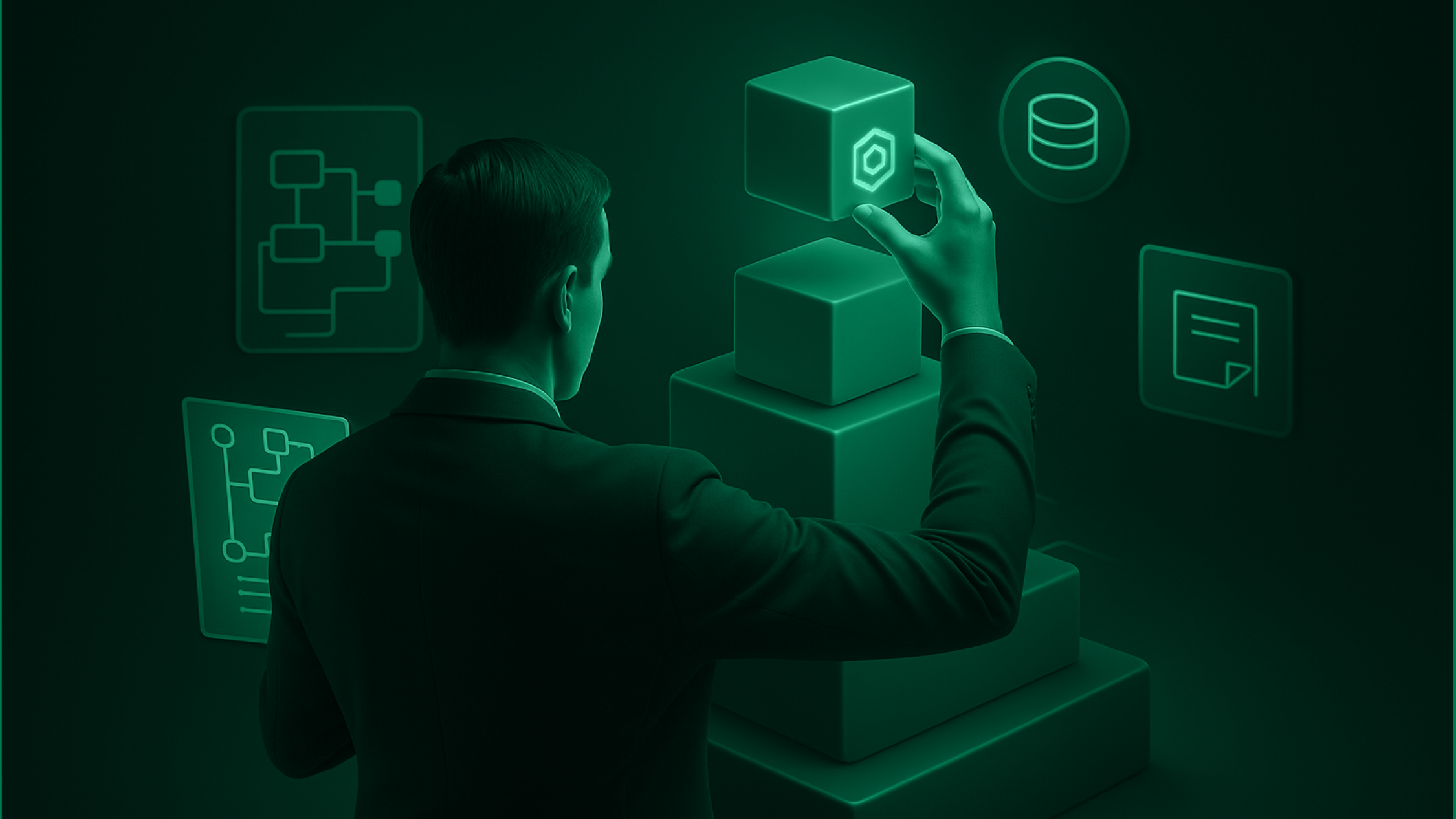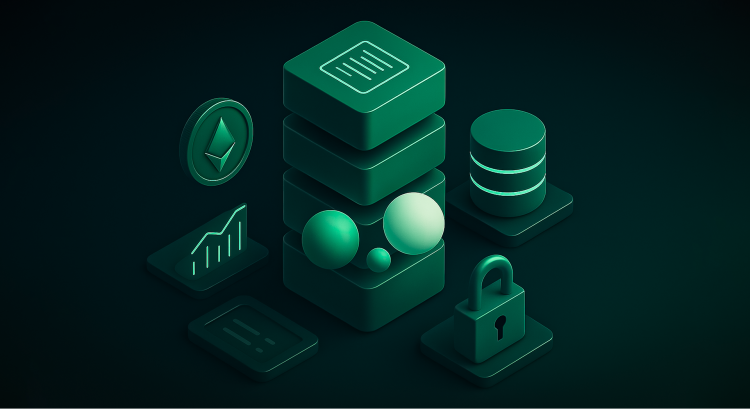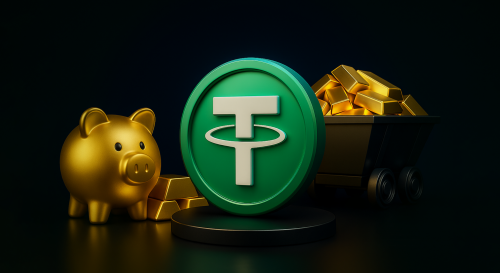Tokenization is changing how assets move, earn, and scale in Web3. But building in this space isn’t plug-and-play; it requires a layered approach.
It’s more like constructing a skyscraper: you need to get the foundations right, align each floor, and install the plumbing, elevators, and emergency exits before inviting people in.
In this playbook, we’ll walk you through how to build within the tokenization stack — a layered, interoperable system where each piece depends on the next.
Whether you’re launching tokenized T-bills or building the next user-facing dApp, understanding the whole architecture is key to building something stable and scalable.
And the best part? The tools, regulations, and demand are finally aligning to make it profitable.
Success means building across a layered, interdependent tokenization stack. Let’s break down how to make it work.
The tokenization building blocks
To start you on the right track, we’ll walk you through the core building blocks of the tokenization stack. We’ll cover asset issuance, compliance, user experience, and DeFi integrations to help you design scalable and compliant onchain products with real-world impact.
Issuance platforms
In the tokenization stack, minting and onboarding are the first critical steps.
Minting creates blockchain tokens that represent real-world assets, while onboarding ensures those assets are custody-backed, compliant, and legally integrated.
Platforms like Ondo and Figure specialize in onboarding real-world assets (RWAs) onto the blockchain. These assets can be almost anything: U.S. Treasuries, rental properties, or private credit.
Your job? Make sure your issuance platform offers:
- Asset transparency and auditability
- Interoperable token standards (such as ERC-3643)
- Hooks into DeFi and custodial networks
Other points to consider:
- Will your token need to be upgraded or paused?
- Is modular governance required?
- Are transfer restrictions needed?
Issuance is not just minting a token; it’s ensuring that what backs that token is credible, trackable, and redeemable. This is especially vital for smooth token redemption flows.
Compliance layers
Compliance is essential for regulated assets, such as securities, which may require identity checks and limitations on who can hold the asset.
Regulatory risk is the iceberg that sinks unprepared tokenization projects. That’s why compliance infrastructure providers like Securitize exist, which specialize in:
- KYC/AML automation and onboarding flows (For example, here it is also worth checking tools such as Fractal or Chainalysis).
- Token permissions and transfer restrictions
- Jurisdictional rule sets
Think of this layer as your building’s equivalent of a legal zoning department. Without it, your shiny tower could be bulldozed tomorrow.
User experience (UX) layers
Tokenized assets are only as useful as they are usable. The UX layer sits at the surface of the stack, enabling users to interact with onchain assets through intuitive, retail-facing dApps.
These interfaces enable users to track yields, manage tokenized portfolios, and execute trades with minimal friction, thereby bringing real-world utility to tokenized products.
Whether it’s a wallet plugin, a mobile dashboard, or an interface for swapping tokenized gold or T-bills, the best UX layers:
- Are mobile-optimized
- Support multiple asset types
- Offer clarity on rewards, risks, and redemption
User trust and adoption live or die here.
DeFi integrations
A tokenized T-bill sitting in a wallet isn’t useful unless it can earn, borrow, or be staked. DeFi protocols like Maple Finance and MakerDAO provide the composability that brings your asset to life.
Plugging into DeFi means you need the following:
- Liquidity pools for your asset
- Lending/borrowing mechanisms
- Oracle integrations for price feeds (e.g., Chainlink CrossChain Interoperability Protocol)
The key here is to make your tokens functional, not decorative.

The infrastructure behind the scenes: Bridges, redemption networks, liquidity, and KYC wrappers
This is the plumbing of your tokenized ecosystem — not always visible, but mission-critical.
- Cross-chain bridges: Assets need to move across different chains. Without bridges, liquidity gets trapped. Solutions like LayerZero or CCIP help address this issue.
- Redemption and custody Networks: Users need off-ramps. Whether it’s via Fireblocks or institutional partners, this is how tokenized T-bills become cash in the bank.
- Liquidity strategies: Liquidity provider incentives, market makers, and DEX listings ensure your asset doesn’t just sit there. Think: Uniswap pairs or Balancer vaults.
- KYC wrappers: These enable a DeFi-native asset to remain compliant by applying permissioning in a manner that preserves a seamless user experience.
Each of these infrastructure layers can also be a startup opportunity. If you play this right, you can build where the gaps still exist.

Dos and don’ts from recent tokenization projects
Let’s learn from those who’ve tested the waters and those who nearly drowned.
The strugglers
- Backed Finance: Struggled with composability; tokens couldn’t easily integrate into DeFi.
- TrueFi: Regulatory pressure and the lack of sustainable yield models hinder its long-term viability.
The survivors
- Ondo: Launched tokenized treasuries with clear redemption pathways and high institutional trust.
- OpenEden: Offered real-world, yield-bearing assets that are focused on compliance-first yield protocols.
- Franklin Templeton: Partnered with legacy institutions to issue tokenized money-market funds with robust custody.
The projects that thrived are the ones that adapted. They prioritized long-term resilience over hype cycles. These are the real-world token builder lessons.
Let’s break down and look at the traits of what the successful tokenization builders got right from the start.
Traits of survivors
- Regulatory clarity from day one
- Deep liquidity planning
- Institutional partnerships
- Agile product development cycles
How to prioritize your build
Building in the tokenization stack demands strategic sequencing. Leverage your existing expertise, break down the problem into its core components, and think in terms of composable layers to deliver value efficiently.
Start with your strengths:
- If you’re a legal/compliance expert: Consider building regulatory tooling or KYC wrappers.
- If you’re UX-focused: Create dashboards, yield explorers, or DeFi onboarding flows.
- If you know DeFi well: Build token integrations, asset bridges, or market-making protocols.
Use the building blocks:
Don’t reinvent issuance, custody, or KYC from scratch. Utilize APIs and SDKs (Software development kits) from established leaders such as Securitize, RWA.xyz, or Chainlink.
Think composable:
Design your solution to plug in with others. Every isolated product is a missed opportunity.
Conclusion: The path forward for token builders in the tokenization market
Tokenization is more than a trend; it’s a new layer of the global financial system. However, the winners in this space will be those who understand that building a successful tokenized product means orchestrating a stack of interoperable components.
Whether you’re enabling gold to trade globally at midnight or helping a retail investor in Brazil earn yield from real estate, the opportunity is real, and the infrastructure is ready.
If you’re a founder, don’t just mint a token. Build the whole city. Design with composability in mind. Stack your layers with intention. And most importantly, know where to play and when to partner. That’s where the next article in this Track comes in. You’ll get a sense of the real differences between crypto and fiat currency, and when to use each. Click below to move forward.



